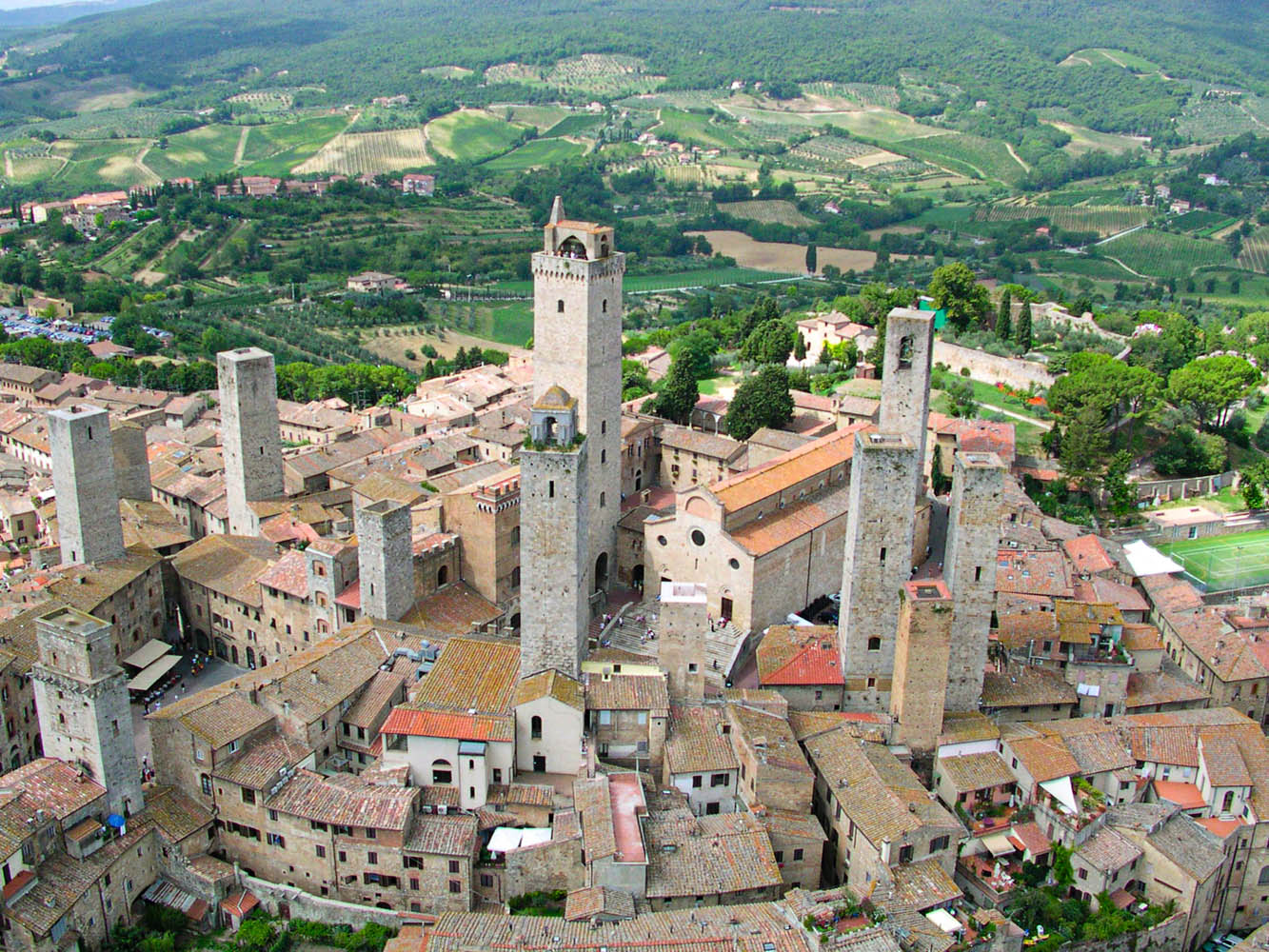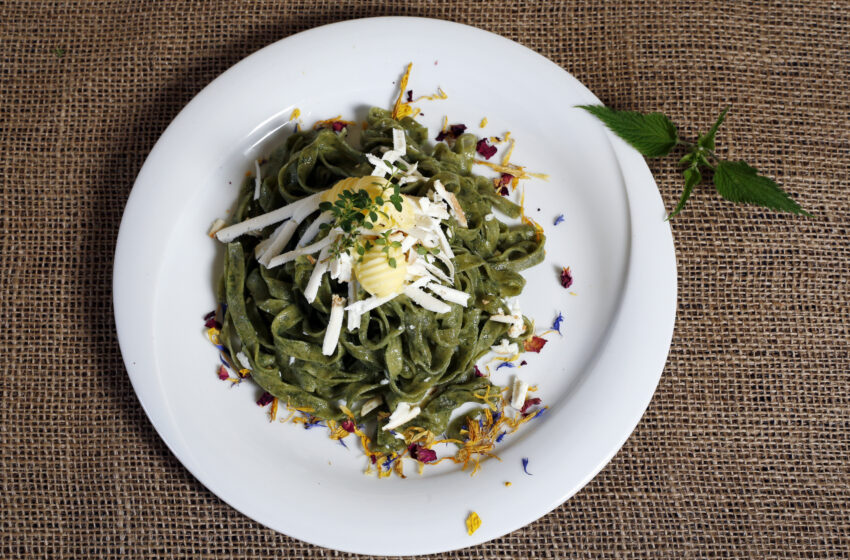
Nettle Fettuccine with Malga Botìro Di Primiero Butter
With such hot and sultry summer seasons, who knows how many people imagine themselves in corners of paradise like this!
Trentino immediately evokes thoughts of fresh and dry air, the scent of nature, images of blooming meadows, transparent waterways, and wild herbs.
Among the edible wild herbs, nettles, known as Dioscorea in Trentino, are one of the protagonists of this dish: Nettle Fettuccine with Malga Botìro Di Primiero and smoked ricotta.
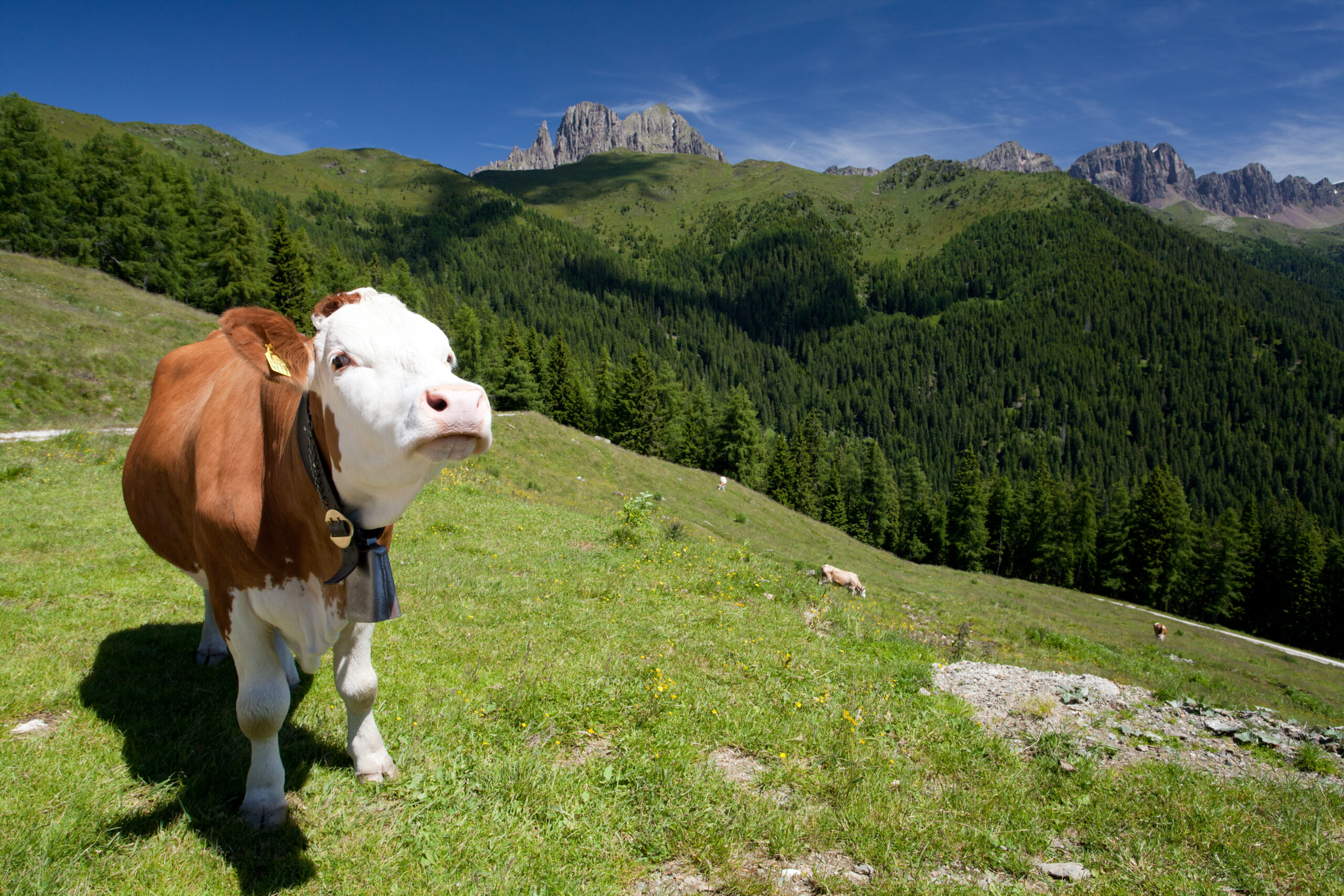
After harvesting, the nettles are washed and left to dry, crumbled, mixed with semolina flour, eggs, and a pinch of salt. Drying the leaves serves the sole purpose of making them available in all seasons. The dough must then rest in the refrigerator for at least 30 minutes before being rolled out and cut into fettuccine.
Hardly an industrial process will be able to produce the typically human imperfections that give that unique pleasantness to the palate that we all know.
A two-minute pasta cooking time is sufficient, then it is sautéed in a pan with the seasoning: grated smoked ricotta, thyme leaves, and Malga Botìro di Primiero: a raw cream butter naturally skimmed from milk produced during summer pasture.
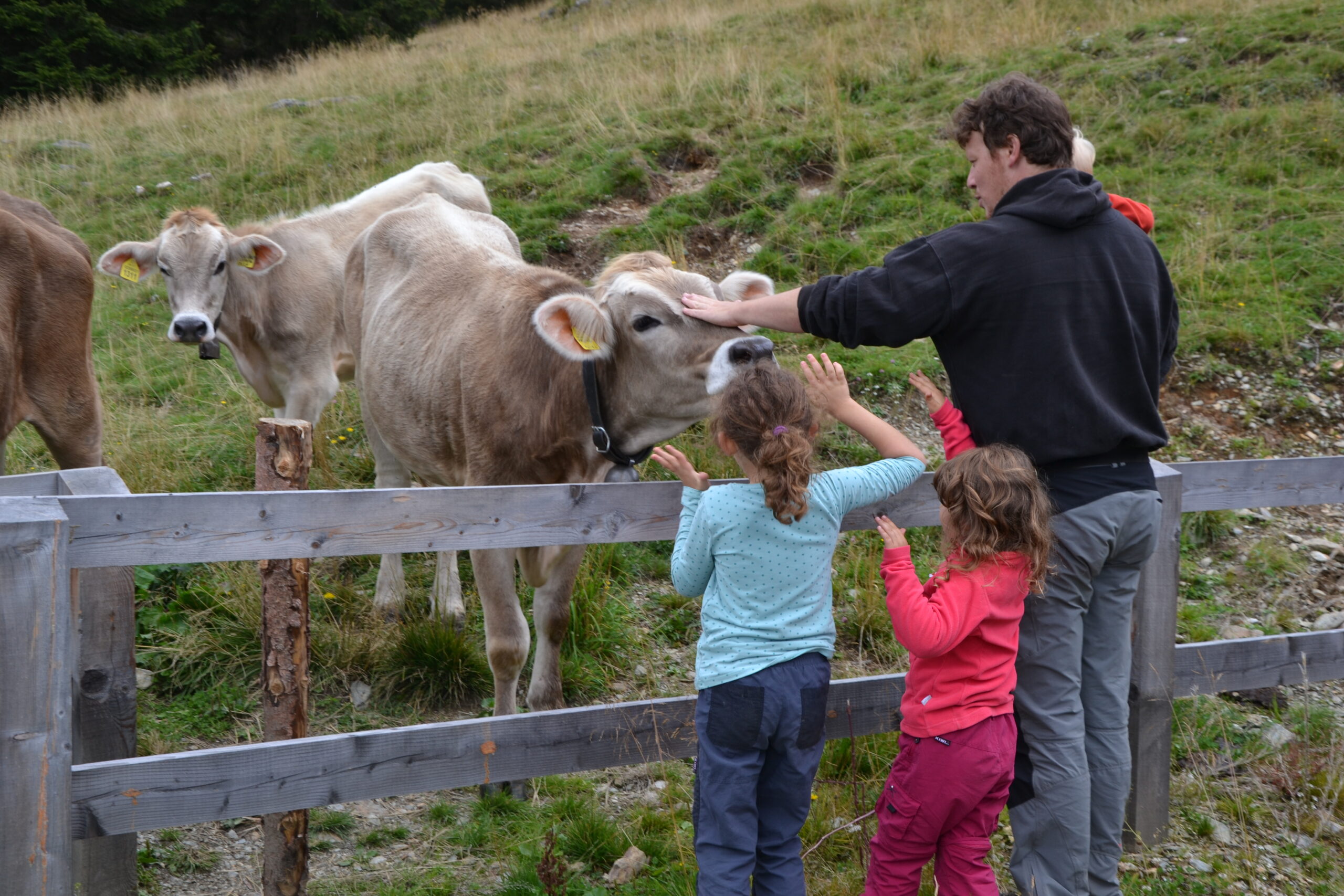
The decidedly yellow color of this butter, a territorial excellence and a Slow Food Presidium, is due to the mountain pasture blooms where animal welfare is a priority of the Province, which supports research in collaboration with the University of Padua.
The artisanal processing is another advantage: the freshly milked milk is left to rest so that the fatty part, i.e., the cream, emerges on the surface, letting the lean part, a kind of whey called “apicello,” drain, which is recovered both for cosmetics and for its properties as a gut flora rebalancer.
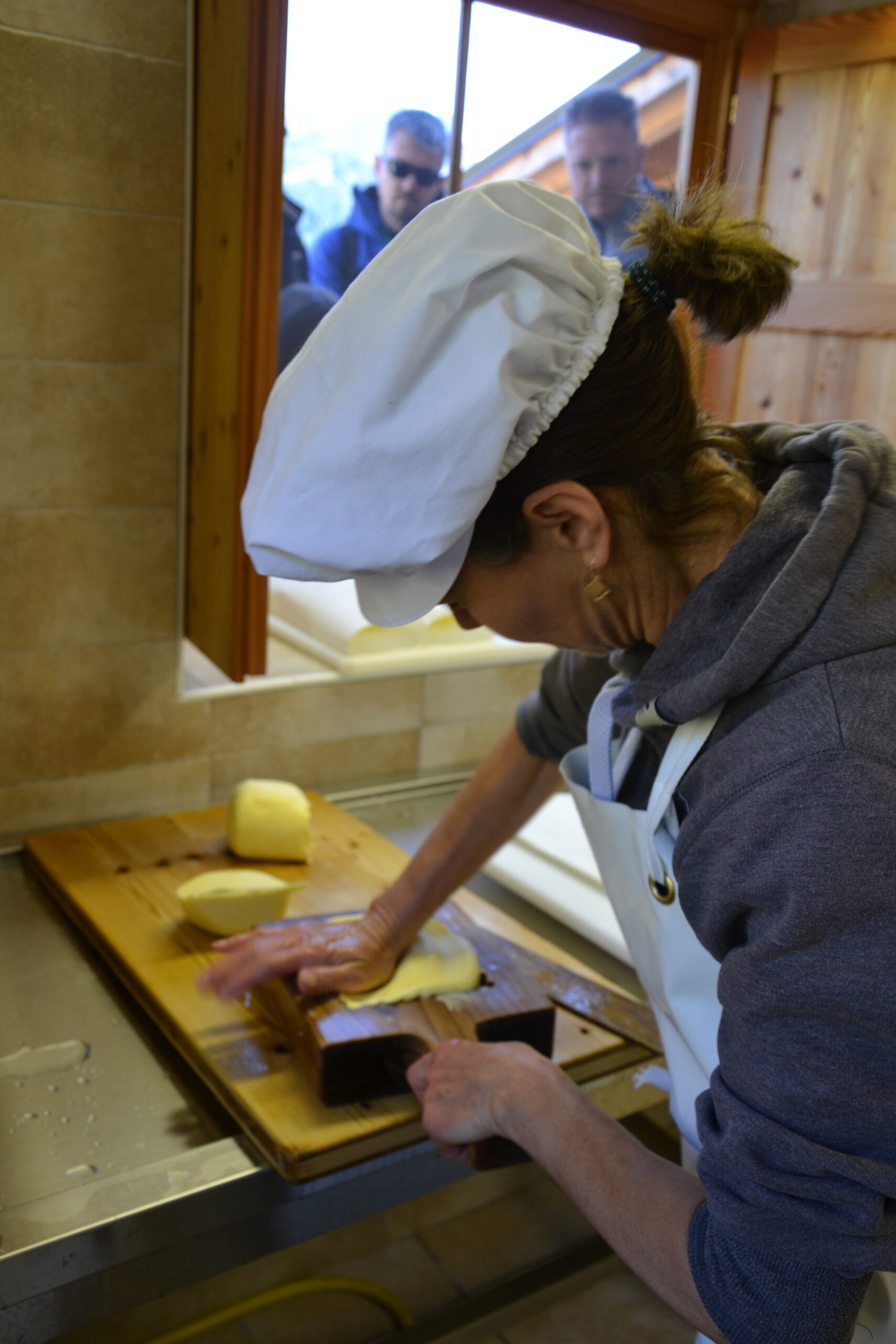
The cream is centrifuged so that it solidifies into butter, which is then manually placed in wooden molds distinguished, according to the malga of origin, by different designs.
For the Fossernica malga, the bas-relief on the butter block depicts a bouquet representing the extraordinary floral biodiversity of these places. Blue and red cornflower petals, yellow marigolds, mallow, and monarda in various shades of pink, fresh or dried, are indeed the decoration of the fettuccine.
Dora tells me that, due to its peculiarities related to natural biological rhythms, “botiro,” butter in Primiero dialect, is only available from July to September, just in time for the creation of this dish with the unmistakable scents and flavors of the mountains.
The history of Primiero butter is indissolubly linked to that of the Serenissima, as it was used on the tables of Venetian aristocracy since breakfast, being salt-free.
Butter, also known as the “yellow gold of the Dolomites,” was one of the main sources of income for the population along with timber, also used for mold construction, and for transport, river routes were exploited.

The Fossernica malga was the first to recover the Primiero tradition in the Vanoi Valley, followed by the Costancelle, Juritello, and Sosse malgas, all three on Passo Rolle.
Smoked ricotta, in dialect “poìna fumada,” is another excellence of the local dairy production. Smoking as a preservation method, a small amount of salt, short aging, and vacuum packaging allow it to be available all year round.
From the heart. Sandra
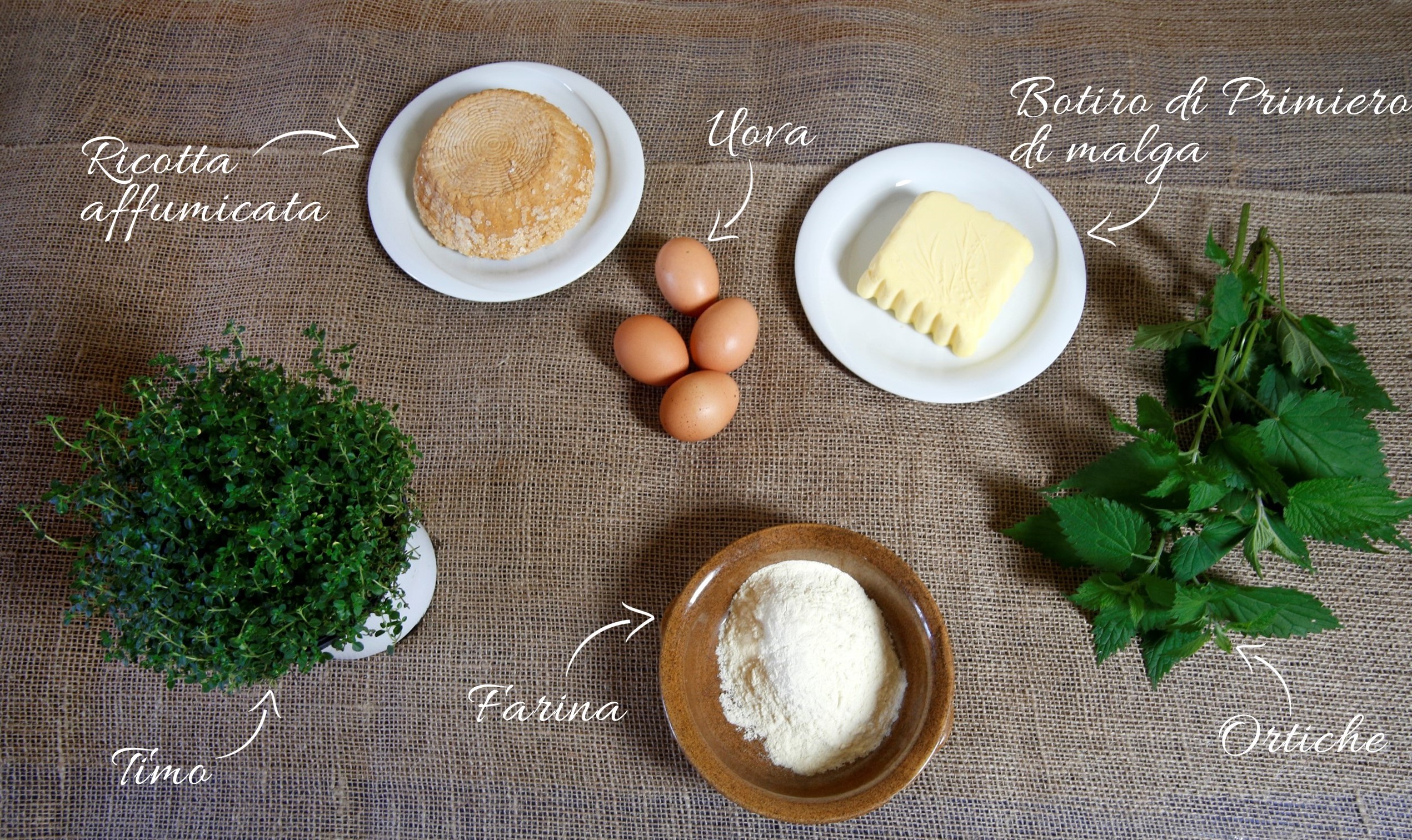
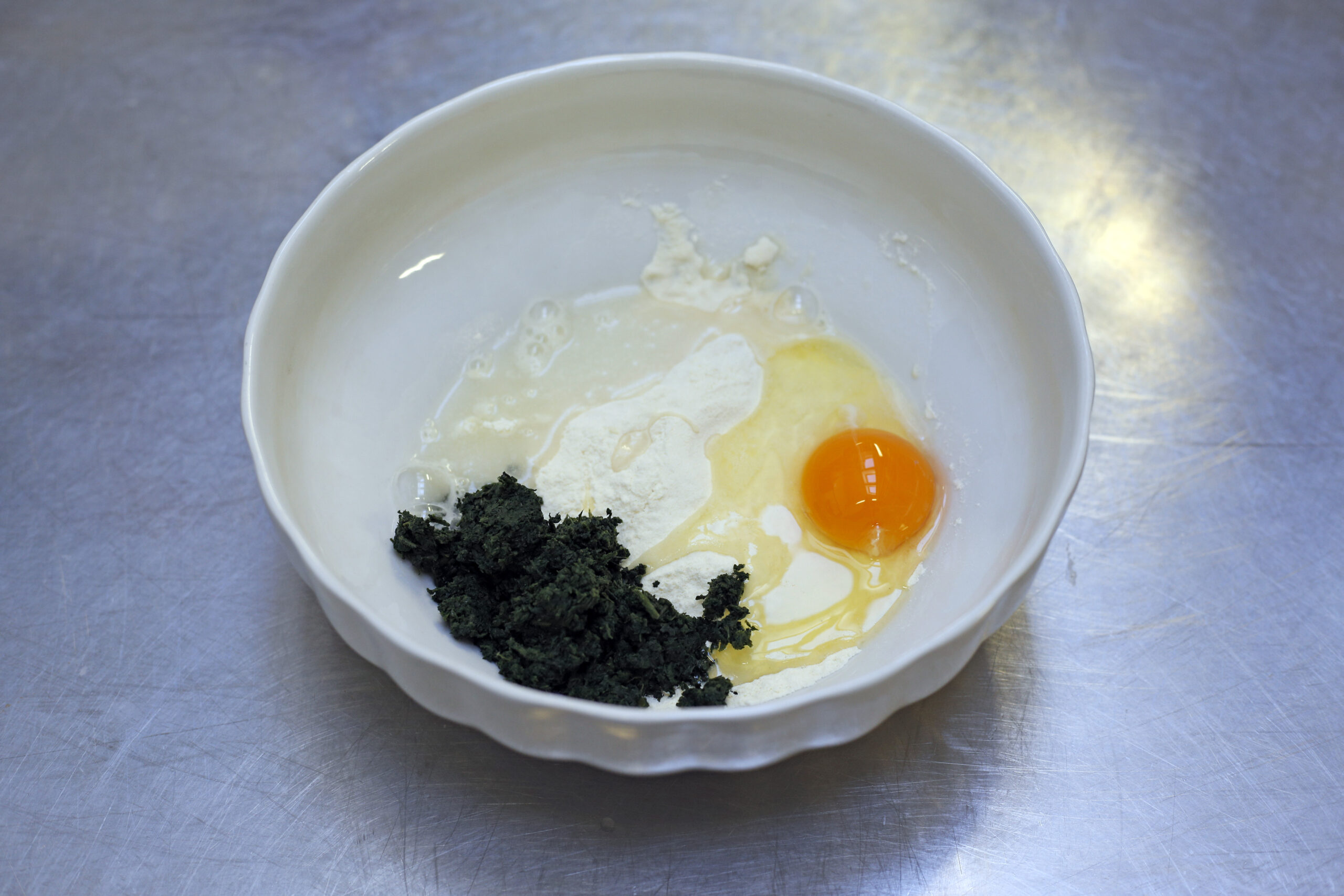
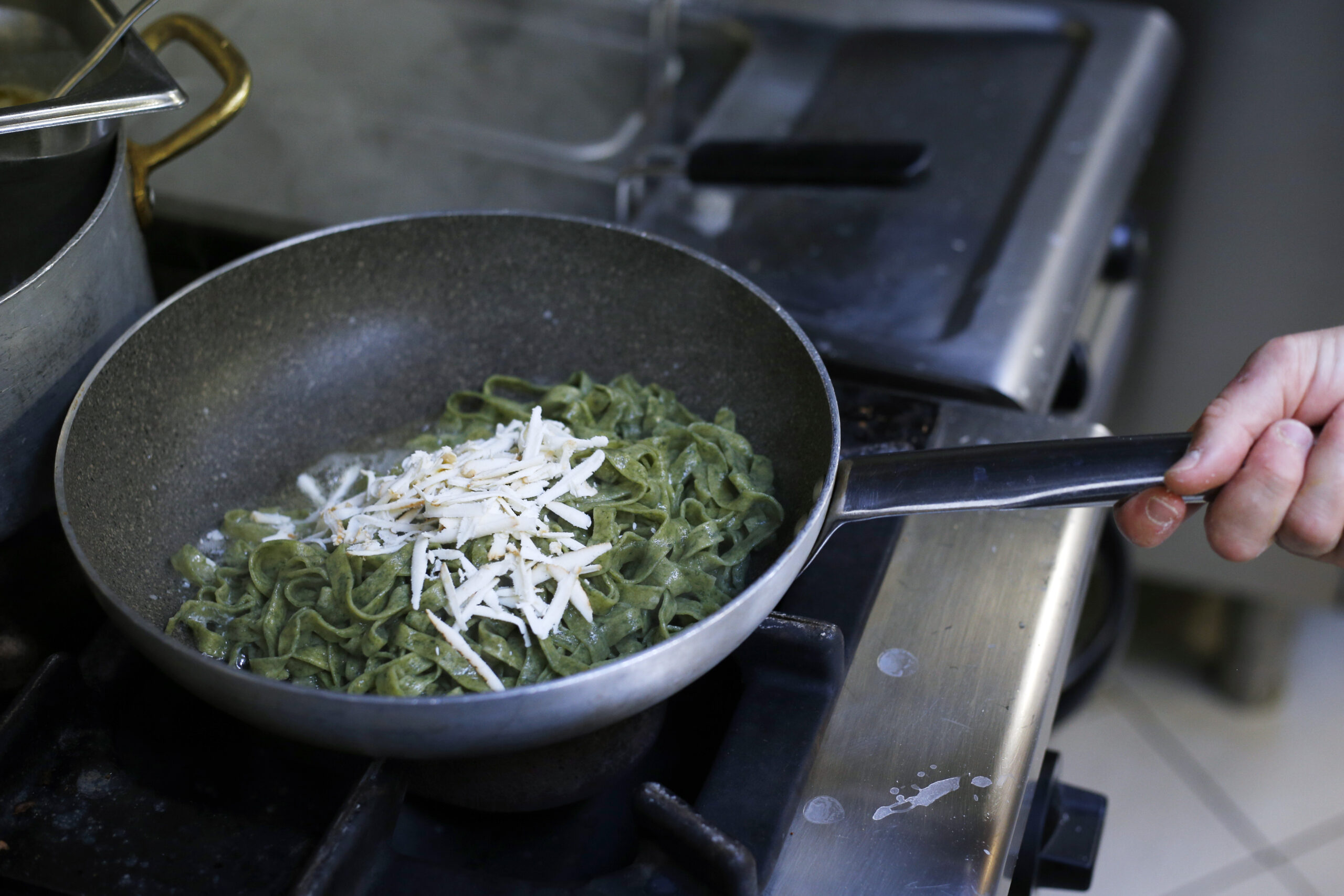
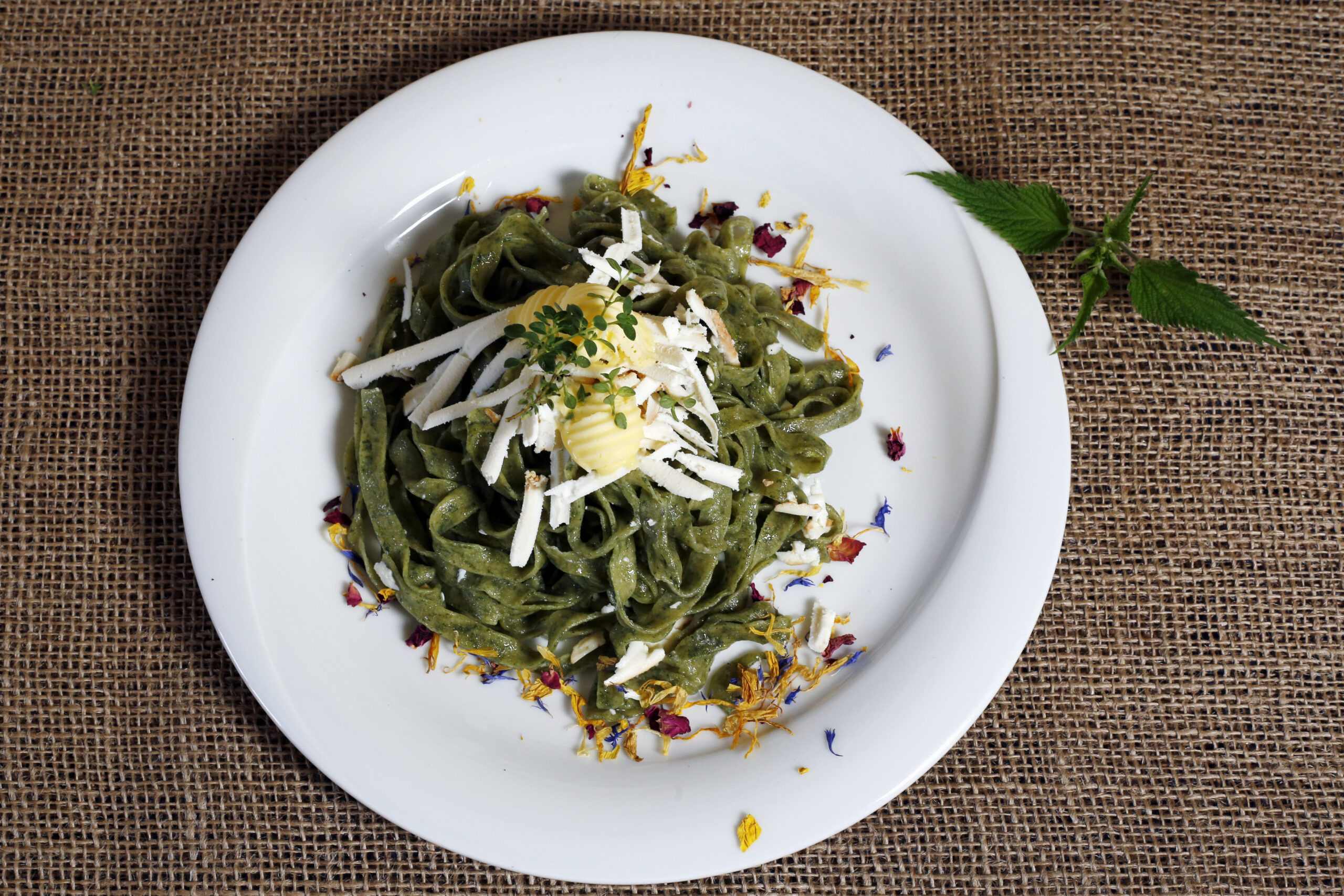
Credits foto:
Claudia Funai
Alessandro Pianalto
Enrica Pallaver

Si occupa di cucina e di tradizioni, con un pensiero sempre sensibile verso le tematiche della sostenibilità sia ambientale che economica.
Leggi in:
![]() Italiano
Italiano






